Hardscapes Greensboro NC have become essential elements in modern outdoor design, offering both functionality and aesthetic appeal. They refer to the non-living components of landscaping, including pathways, patios, walls, and other structural elements.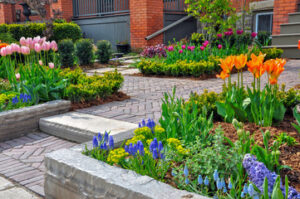
Unlike softscapes, which involve plants and vegetation, hardscapes provide the foundation and structure for outdoor spaces. Their versatility allows for creative and practical applications in various settings.
The integration of hardscapes into outdoor areas enhances the overall usability of a space. Well-placed walkways and patios create flow and connectivity, guiding movement throughout the area. Retaining walls and steps add dimension and stability to uneven terrain. These structures contribute to a balanced and organized outdoor environment.
Materials used in hardscaping vary widely, offering options for different styles and budgets. Stone, concrete, and wood are commonly used for their durability and aesthetic value. Textures and colors can be customized to complement the surrounding environment. The right choice of materials enhances the cohesion and appeal of the space.
Drainage is a critical consideration when designing hardscapes. Proper slope and grading prevent water accumulation and structural damage. Permeable materials allow water to pass through, reducing runoff and improving soil health. Thoughtful drainage design protects both the hardscape and the surrounding landscape.
Hardscapes are not only functional but also serve as artistic expressions. Patterns and layouts can reflect cultural influences and personal preferences. Intricate mosaics and geometric designs add visual interest and character. The combination of form and function creates a harmonious outdoor experience.
Lighting plays a significant role in highlighting hardscape features. Strategically placed lights enhance visibility and create ambiance. Uplighting and pathway lights emphasize textures and patterns. Well-lit hardscapes increase safety and extend the usability of outdoor spaces into the evening.
The addition of water features elevates the appeal of hardscapes. Fountains and waterfalls introduce movement and sound, creating a calming atmosphere. Reflecting pools and ponds add depth and serenity to the design. The interplay of water and stone enhances the sensory experience.
Outdoor seating areas are central to hardscape design. Built-in benches and stone seating provide permanent gathering spots. Fire pits and outdoor kitchens encourage social interaction and relaxation. These features transform outdoor spaces into functional and inviting environments.
Vertical elements add structure and privacy to hardscapes. Trellises and pergolas define spaces and create shade. Stone walls and wooden fences enhance security while contributing to the design aesthetic. Vertical features also serve as backdrops for climbing plants and hanging decor.
Seasonal changes influence the performance and appearance of hardscapes. Freeze-thaw cycles and heavy rainfall can cause shifting and erosion. Proper material selection and installation techniques prevent weather-related damage. Regular maintenance ensures long-term durability and visual appeal.
Eco-friendly hardscaping practices have gained traction in recent years. Recycled materials and sustainable sourcing reduce environmental impact. Green roofs and living walls blend hardscapes with natural elements. These approaches promote environmental responsibility while enhancing aesthetic value.
Hardscapes can create seamless transitions between indoor and outdoor spaces. Large sliding doors and continuous flooring materials unify the two areas. Covered patios and outdoor rooms extend living spaces into the landscape. This connection increases the functional footprint of a property.
Privacy and noise reduction are additional benefits of well-designed hardscapes. Stone walls and wooden panels buffer sound and create secluded areas. Strategic planting of shrubs and trees further enhances privacy. A thoughtfully designed hardscape provides a peaceful and intimate outdoor retreat.
Innovative hardscaping techniques continue to emerge in modern design. Modular systems allow for easy installation and customization. Pre-cast concrete and interlocking pavers simplify construction while maintaining visual appeal. These advancements increase efficiency without sacrificing creativity.
Natural elements are often incorporated into hardscaping for a cohesive look. Boulders and river rocks add texture and contrast. Driftwood and reclaimed materials provide a rustic and organic feel. Blending natural and man-made elements creates a balanced and inviting space.
Custom hardscape features reflect personal style and functionality. Outdoor fireplaces and pizza ovens cater to culinary enthusiasts. Sunken seating areas and tiered patios create dynamic and engaging layouts. Personal touches transform hardscapes into extensions of individual lifestyles.
The role of hardscapes extends beyond residential settings. Public parks and commercial spaces benefit from well-designed hardscapes. Plazas and courtyards provide gathering spaces for social interaction. Durable materials and low-maintenance designs ensure longevity and usability.
Adaptive hardscaping addresses the needs of different users. Wheelchair-accessible pathways and ramps increase inclusivity. Smooth surfaces and handrails enhance safety and mobility. Thoughtful design ensures that outdoor spaces are accessible to all.
Hardscapes also contribute to property value and curb appeal. Well-maintained patios and walkways enhance the overall aesthetic of a home. Buyers are drawn to functional and visually appealing outdoor spaces. Investment in hardscaping yields both personal and financial returns.
Low-maintenance hardscapes are increasingly popular among homeowners. Artificial turf and composite decking reduce the need for watering and upkeep. Stone and concrete require minimal maintenance while retaining their structural integrity. This shift toward low-maintenance options reflects changing lifestyle preferences.
The influence of cultural traditions is evident in hardscape design. Courtyards and zen gardens reflect Eastern design principles. Mediterranean-inspired terraces feature warm tones and intricate patterns. Cultural influences enrich the diversity and creativity of hardscape design.
Climate considerations play a crucial role in hardscape planning. Heat-resistant materials prevent surface damage in hot environments. Frost-proof pavers and stone resist cracking in cold climates. Adapting materials to local conditions ensures lasting performance and comfort.
The rise of outdoor entertainment spaces has increased demand for hardscapes. Outdoor theaters and sound systems create immersive experiences. Weatherproof furniture and retractable awnings enhance comfort and usability. Entertainment-focused designs transform outdoor areas into social hubs.
Safety and security are integral to hardscape design. Non-slip surfaces and well-lit pathways prevent accidents. Fencing and gates provide controlled access and protection. Secure and well-maintained hardscapes increase peace of mind for property owners.
The use of technology in hardscape design continues to grow. Smart irrigation systems and automated lighting improve efficiency. App-controlled features allow for remote management of outdoor spaces. Technological integration enhances both convenience and sustainability.
Hardscape maintenance extends beyond cleaning and repairs. Seasonal inspections and resealing protect against wear and weathering. Clearing debris and preventing weed growth preserves the integrity of the design. Consistent care ensures that hardscapes remain functional and attractive.
Versatility is a defining feature of modern hardscapes. Multi-purpose areas accommodate different activities and events. Flexible seating arrangements and movable partitions increase adaptability. A well-designed hardscape serves both everyday needs and special occasions.
The psychological impact of hardscapes is often underestimated. Thoughtful design and natural elements create a calming and restorative environment. Comfortable seating and soothing water features promote relaxation. Hardscapes contribute to overall well-being by fostering tranquility and connection with nature.
Community spaces benefit from inclusive and inviting hardscapes. Open plazas and shared courtyards encourage social interaction. Accessible pathways and seating areas accommodate diverse needs. Hardscapes play a key role in fostering a sense of belonging and connection.
Future trends in hardscape design emphasize sustainability and innovation. Solar-powered lighting and eco-friendly materials reduce environmental impact. Modular designs and lightweight materials simplify installation and customization. Hardscapes will continue to evolve, reflecting technological advancements and changing lifestyle preferences.
The balance between hardscapes and softscapes defines the success of a landscape design. The contrast between natural and structural elements creates depth and interest. Strategic placement of plants softens the appearance of hardscapes. A harmonious blend of hard and soft elements enhances the overall aesthetic.
Water conservation has become a priority in hardscape design. Permeable surfaces and drought-resistant plants minimize water usage. Rainwater harvesting systems integrate seamlessly with hardscape features. These solutions address environmental concerns while maintaining functional beauty.
Outdoor art installations are becoming a popular addition to hardscapes. Sculptures and murals reflect personal taste and creativity. Functional art pieces, such as carved benches and decorative fountains, combine beauty with utility. Artistic hardscapes enhance the character and identity of a space.
Color and texture play a significant role in hardscape design. Warm tones create a welcoming atmosphere, while cooler shades evoke calmness. Contrasting textures, such as smooth stone and rough wood, add visual interest. Thoughtful use of color and texture elevates the overall design.
Adaptive reuse of materials has gained momentum in hardscape design. Salvaged bricks and reclaimed wood reduce waste and add character. Upcycled elements contribute to a unique and eco-conscious aesthetic. This approach reflects a broader shift toward sustainable design practices.
Hardscapes are more than just structural elements; they define the character and function of outdoor spaces. Their design reflects personal style, environmental considerations, and practical needs. The evolving nature of hardscaping continues to inspire creativity and innovation. Thoughtful planning and execution ensure that hardscapes remain valuable and enduring features of modern landscapes.

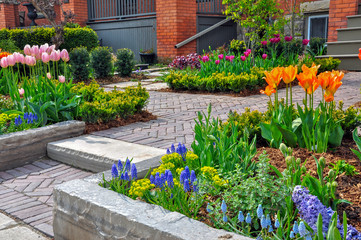
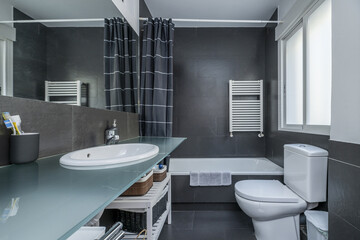

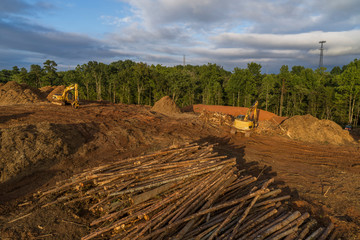
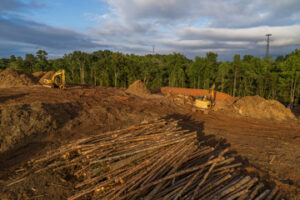
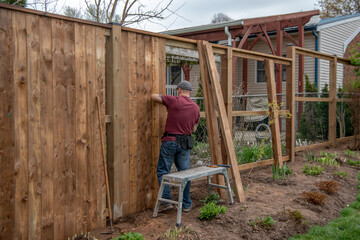
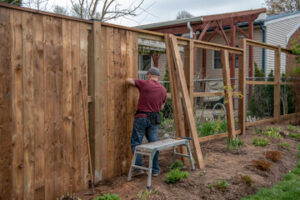 Business Registration
Business Registration
